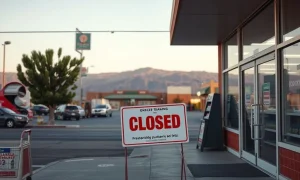The fitness giant Peloton recently delivered a stark message to its workforce. This announcement underscores significant challenges facing the company. Indeed, the Peloton sales decline has become a central concern for stakeholders. Many observers are closely watching the company’s strategic responses. Understanding these developments is crucial for anyone tracking the business landscape.
Understanding the Peloton Sales Decline
Peloton, once a pandemic darling, faces a dramatic shift in its fortunes. The company communicated tough news to employees. This included significant workforce reductions. Furthermore, it revised its financial outlook downwards. These actions reflect a challenging market environment. The company’s rapid expansion during lockdowns proved unsustainable. Consequently, the demand for its connected fitness products decreased sharply. This downturn directly impacted revenue figures. Therefore, leadership enacted aggressive cost-cutting measures. These steps aim to stabilize the business. They also seek to restore investor confidence.
In early 2022, Peloton announced plans to cut approximately 2,800 jobs globally. This represented a significant portion of its corporate workforce. Furthermore, the company scaled back its previously ambitious growth forecasts. It also ceased development on its new factory in Ohio. These decisions signaled a clear shift. The focus moved from aggressive expansion to sustainable operations. The downturn was stark. It contrasted sharply with the booming demand seen just two years prior. Consequently, the company’s valuation plummeted. It fell from its pandemic-era highs. This forced a strategic re-evaluation at every level.
Factors Contributing to the Downturn
Several elements contributed to Peloton’s current predicament. Firstly, the post-pandemic shift in consumer behavior played a major role. As gyms reopened, many users returned to in-person workouts. This reduced the reliance on home fitness equipment. Secondly, the market saw increased competition. New entrants and established brands offered alternative products. These often came at lower price points. Consequently, Peloton’s premium pricing became a hurdle. Thirdly, broader economic pressures affected consumer spending. Inflation and recession fears made discretionary purchases less likely. People became more cautious with their budgets. This combination of factors accelerated the Peloton sales decline. The company needed to adapt quickly.
Competitors like NordicTrack, Echelon, and Mirror gained traction. They offered similar connected fitness experiences. Many provided more budget-friendly options. This intensified the market pressure on Peloton. Consumers had more choices. They also became more price-sensitive. Peloton’s initial high price point and monthly subscription became less appealing. This was especially true as economic uncertainties grew. The competitive landscape diversified rapidly. This directly challenged Peloton’s once dominant position.
The Human Impact: Employees Face Uncertainty
The company’s strategic shifts directly affected its workforce. Thousands of employees faced job losses. This created widespread uncertainty within the organization. Morale often suffers during such periods. Remaining staff members navigate a changing corporate landscape. Peloton leadership acknowledged the difficult nature of these decisions. They emphasized the necessity of these steps for the company’s long-term viability. Employees received severance packages. They also got outplacement support. However, the emotional toll of layoffs remains significant. The Peloton sales decline directly led to these personnel changes.
Peloton leadership expressed regret over the necessity of these cuts. They stated that the moves were essential for the company’s long-term health. Affected employees received severance packages. These packages varied based on tenure. They also gained extended healthcare benefits. Additionally, Peloton offered outplacement services. These aimed to assist former employees in finding new roles. However, the psychological impact of job loss remained. Many employees felt a deep connection to the brand. The sudden change created a challenging environment. It affected both those leaving and those remaining.
Peloton’s Strategic Response to Sales Decline
In response to the severe downturn, Peloton initiated a comprehensive turnaround plan. The company appointed a new CEO, Barry McCarthy. He previously held leadership roles at Spotify and Netflix. His appointment signaled a fresh strategic direction. Under his guidance, Peloton began a significant restructuring. This involved streamlining operations. It also included divesting non-core assets. For example, Peloton sold its logistics network. This move aimed to reduce operational costs. The company also shifted its product strategy. It focused on making its offerings more accessible.
Barry McCarthy, the new CEO, brought a fresh perspective. He emphasized subscription growth over hardware sales. This marked a significant pivot. His vision aimed to transform Peloton into a more accessible fitness platform. The new rental program exemplified this shift. It allowed customers to rent a Bike or Bike+ for a monthly fee. This fee included the All-Access Membership. This model lowered the upfront cost barrier. It also aimed to attract a wider demographic. The program launched in select markets. Its success is crucial for future revenue streams. Peloton also started selling refurbished equipment. This provided another entry point for consumers.
Furthermore, Peloton introduced a rental program. This allowed customers to rent equipment rather than buy it outright. This expanded the customer base. It also lowered the barrier to entry. The company also explored partnerships. It collaborated with Amazon for broader distribution. This marked a significant departure from its direct-to-consumer model. These bold steps aim to reverse the Peloton sales decline. They seek to re-establish the company’s market position. The focus remains on sustainable growth.
The partnership with Amazon was groundbreaking. It allowed Peloton to sell its Bike, Bike+, Tread, and Guide directly on the e-commerce giant’s platform. This move significantly expanded Peloton’s retail footprint. Previously, sales were primarily direct-to-consumer. This partnership aimed to reach millions of new potential customers. It also streamlined delivery and installation processes. Peloton also explored collaborations with hospitality groups. It placed its equipment in hotels and resorts. These multi-pronged approaches seek to diversify revenue. They also aim to re-engage a broader market.
Market Reaction and Future Outlook
Investors reacted cautiously to Peloton’s restructuring efforts. The company’s stock experienced significant volatility. Analysts offered mixed predictions. Some remain optimistic about the new leadership. They see potential in the diversified sales channels. Others express skepticism. They point to the competitive landscape. They also highlight the challenging economic environment. The path to recovery for Peloton is not simple.
Financial analysts presented a mixed bag of forecasts. Some firms upgraded Peloton’s stock. They cited the aggressive cost-cutting and new strategic direction. They believed the company could achieve profitability under the new model. Conversely, other analysts remained cautious. They highlighted the ongoing macroeconomic headwinds. They also pointed to the intense competition in the connected fitness space. The company faces the arduous task of re-establishing brand loyalty. It also needs to attract new subscribers in a crowded market.
Key challenges persist. Building a new revenue stream takes time. Restoring brand perception is also crucial. The company must prove its long-term value proposition. Moreover, it needs to attract new subscribers. It also must retain existing ones. The future of connected fitness is still evolving. Peloton aims to remain a leader. Its ability to innovate will be critical. Overcoming the Peloton sales decline requires sustained effort. The success of its new initiatives, like the rental program and Amazon partnership, will be critical indicators. Peloton’s ability to innovate beyond its core products, such as its upcoming rowing machine, will also be closely watched. The journey to recovery is long. It requires consistent execution and market adaptation.
Peloton faces a pivotal moment in its corporate history. The severe Peloton sales decline necessitated drastic measures. These included significant layoffs and strategic pivots. The company is actively working to adapt its business model. It seeks to thrive in a post-pandemic world. Its new strategies focus on cost efficiency and broader market reach. Only time will tell if these bold changes yield positive results. The fitness industry continues to evolve rapidly. Peloton’s journey serves as a case study. It highlights the challenges of rapid growth and market shifts.
Frequently Asked Questions (FAQs)
Q1: Why did Peloton’s sales decline?
A1: Peloton’s sales declined due to several factors. These include a post-pandemic shift in consumer behavior, increased competition from other fitness brands, and broader economic pressures affecting consumer spending. Many people returned to gyms, reducing demand for home fitness equipment.
Q2: How has the Peloton sales decline impacted employees?
A2: The sales decline led to significant workforce reductions. Thousands of employees faced layoffs. This created uncertainty and impacted morale within the company. Peloton provided severance and outplacement support to affected staff.
Q3: What steps is Peloton taking to address its challenges?
A3: Peloton appointed a new CEO, Barry McCarthy. It initiated a comprehensive restructuring plan. This includes streamlining operations, divesting non-core assets, and introducing new strategies. These strategies include a rental program and partnerships with retailers like Amazon.
Q4: Is Peloton expected to recover from its sales decline?
A4: The market has mixed reactions regarding Peloton’s recovery. While new leadership and diversified sales channels offer potential, significant challenges remain. These include intense competition and a challenging economic environment. The company’s ability to innovate and attract new subscribers will be key.
Q5: What is Peloton’s current business strategy?
A5: Peloton’s current strategy focuses on cost efficiency, broader market reach, and accessibility. It aims to make its products more affordable and available through various channels. This includes exploring partnerships and rental models, moving beyond its initial direct-to-consumer approach.
Q6: What is the future outlook for the connected fitness industry?
A6: The connected fitness industry continues to evolve. While the initial pandemic-driven boom has subsided, demand for convenient home fitness solutions remains. Companies like Peloton must innovate, diversify offerings, and adapt to changing consumer preferences and economic conditions to thrive in this competitive landscape.
























